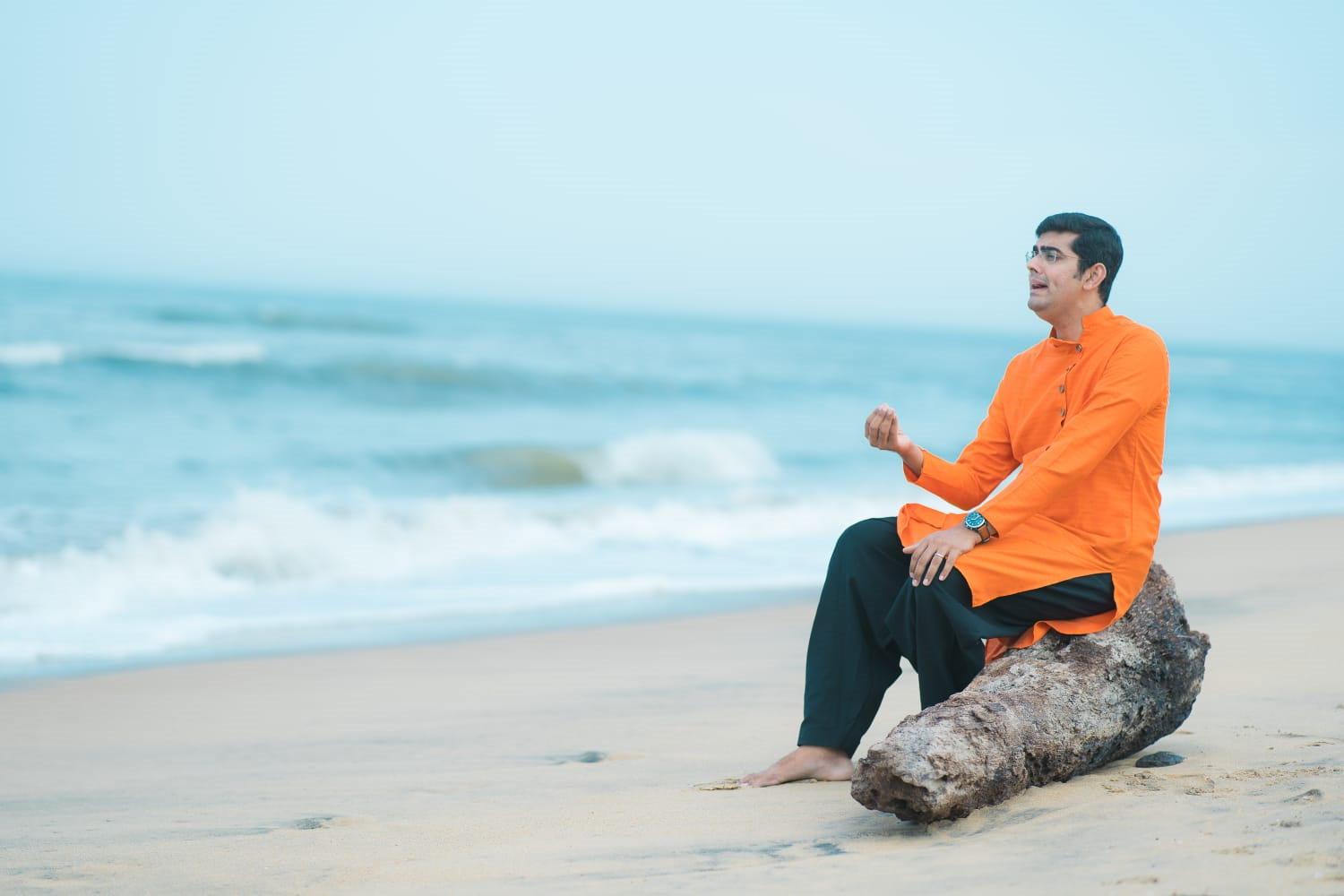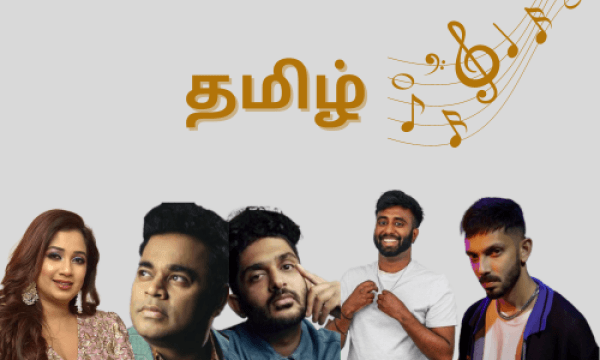
Tamil is known to be the only surviving classical language that has been documented for 2,000 years. And if one were to showcase its association with traditional music, it would call for nothing less than a ceremonial parade. “Tamil Isai Ula” – a ceremonial parade of Tamil Isai (Music) is the topic that the famed young Vocalist Sikkil C. Gurucharan chose for his topic when he toured New York, the Bay Area, Chicago, St Louis and Atlanta in the month of May 2019. From start to end, Gurucharan – the charming raconteur showcased the glory of Tamil Isai, in chronologically increasing order, interspersing it with chaste Carnatic music compositions from the era he was explaining.
He started off with the Sangam Literature – an anthology of poems that have been written by people from both genders and all walks of life, classified broadly as “inner field” (akam) and “outer field” (puram), the former dealing with human feelings such as love and intimacy and the latter dealing with other aspects of human experience such as courage, philanthropy, social life, etc. Gurucharan sang a poem from Kuruntokai (set to Hamsadhwani) and puram nanooru (set to Shanmukhapriya).
While the romantic piece from Kuruntokai asks the honey bee “have you come across any flower that smells better than my beloved’s hair”, the popular “yAdum oorE, yAvarum kELeer” of Kaniyan Poongundranar from the puram nanooru has a philosophical bent to it that spreads the message of Harmony among people. ‘yAdum oore” was made popular by President Abdul Kalam in his address to the European Union in 2007 when he quoted “i am a world citizen, every citizen is my own kith and kin.”
After the fascinating journey down to the Sangam literature era, Gurucharan brought up the epic Silappadhikaaram from the 4th century and explained how the epic references some of the earliest instruments, music, and styles of performances that are relevant until today, with a composition where Kovalan and Madhavi play the yazh, and tune the instrument by using the 8 golden rules arrived at by experts of music.
It was then time for Tiruvalluvar’s tirukkural (5th century), and Gurucharan rendered a beautiful kural on “solvanmai” (power of speech) tuned in the Raga Reeti Gowla by Sangeet Samrat Chitravina N Ravikiran who set the 1330 verses to tune in a record 16 hours a few years ago. The tirukkural are a set of verses that advocate everyday morals. The particular kural that he presented elaborated on the winning qualities of a good speaker, and looking back, it was very clear that Gurucharan had taken the meaning of that kural to heart, for his presentation was articulate, fearless, succinct, and left the audience longing for more.
He then presented a brilliant palindromic set of verses of Tiru Gnanasambandar – one of the three Tamizh Poets of the 7th century along with Sundarar and Appar who led the Shaivite Bhakti movement. This was set to raga Sama and a palindrome tala – Chaturashra Mathya tala to conceptually match with the palindromic structure of the verses. This period, he said, marked the earliest known use of Tamil panns (ragas).
He sang the verses of Kulashekara Azhwar and Andal from the 9th and 10th century, to contrast the role of Devaki and Yashoda as mothers of Krishna. These verses, he described, were from the 4000 Divya Prabandham that were written by the 12 azhwars of the Vaishnavite tradition. He then touched upon Kamba Ramayanam from the 12th century – a re-telling of Valmiki’s work on the same subject, for which he set to tune and sang the verses that described the gait of Shoorpnakha and the gait of Seetha. The verses described the former walking towards Rama with desire, and the latter with love. Gurucharan alternated seamlessly between an orotund voice and a mellifluous voice with appropriate dynamics to simulate the contrasting personalities of the two women. And the choice of ragas were Dhenuka and Khamach, with a quintuple meter to denote the gait of Shoorpanakha.
He then presented “Muttaitiru attitirunagai” - a Tiruppuhazh (the brilliant compositional creation of Arunagirinathar from the 15th century) as a Ragamalika. He spoke passionately about the rhythmic complexity of the Tiruppuhazh, and how the meter set by Arunagirinathar is unchangeable. At this point, Gurucharan mentioned that Carnatic music started evolving around this time – the 16th century, and how the Trinity in the eighteenth century codified Carnatic music into the structured form that it is today.
Moving on to the 17th century, he presented a composition of one of the Tamil Moovar or Trinity - Arunachala Kavi, from the Ramanatakam tuned by the illustrious Ariyakudi Ramanuja Iyengar. The composition he presented visualized the anger of Rama when he asked Lakshmana to go find Sugreeva. This was followed by the work of another brilliant Pre-trinity composer – Oottukkadu Venkata Kavi (1700-1765?) whose Saptaratna in Paras was presented. The only composition in Tamil in the set of seven gems, he explained that this composition references the 63 Nayanmars in the Madhyama Kala Charanams.
Gurucharan then presented ‘Kaaranam kettu vaadi’ - a composition of Gopalakrishna Bharathi – a contemporary of Tyagaraja who lived in the 18th century. This was followed by a composition of Vedanayakam Pillai in the 19th century, ending in a thought provoking social critique composed by Shri V Ramaswamy from New Jersey.
Uncompromised classicism, elements of manodharma (creativity) woven into the compositions wherever needed, and an engaging tale of ‘Tamil Isai’ narrated with passion marked this lovely presentation ordered in chronologically increasing order. An eye opener for those who think that Tamil music is confined to folk and Kollywood. Gurucharan summarized that – “One can trace the roots of Carnatic music to Tamil Isai.”

























